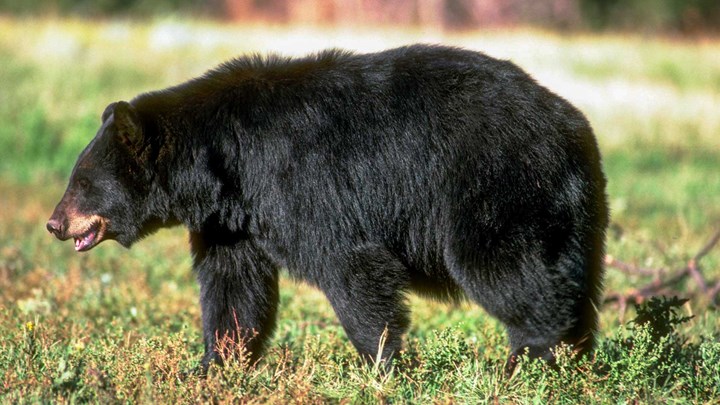
by Cody McLaughlin - Monday, June 17, 2024

In a shocking turn of events in the Golden State, a black bear has been documented killing and devouring a woman—inside her home—marking the first fatal black bear attack in the state’s history as confirmed by the state after a nearly six-month investigation.
As someone who has extensively covered human-bear encounters and hunter-based bear management, the NRA and the NRA Hunters’ Leadership Forum website have long advocated for proactive measures to mitigate such tragic events. This incident serves as a stark reminder of the consequences of an unmanaged and burgeoning bear population.
As is most often the story with increased bear-human interactions involving black bears, the species’ population is on the rise. This leads to an increase in conflicts in populated areas that the bears are drawn to due to the strong habitat factors involved, from dumpsters to culverts, backyard gardens and beyond, the food sources are endless and attractive to black bears.
In fact, according to the U.S. Forest Service (USFS), California's black bear population has significantly increased in recent years and is now estimated at between 25,000 and 30,000 individuals—as many grizzly bears as there are in the entire state of Alaska but in a much smaller and more populated state, and 10 times the amount in New Jersey, which currently boasts the densest population of the bears. Now (stop me if we’ve seen this movie before), due to the population density reaching carrying capacity, these bears are spreading into areas where they were not seen 50 years ago, as noted by the USFS and the California Department of Fish & Wildlife, such as in the Central Coast and Transverse mountain ranges of Southern California. This expansion into new territories has inevitably led to more frequent problematic human-bear encounters, which are leading to increasingly dangerous—and now fatal—outcomes.
According to reports on the fatal California bear attack, the victim, 71-year-old Patrice Miller, was mauled and then fed on in her own home after an extended period of contacting officials to report more and more aggressive encounters with bears near her home where she even named one unidentified bear as “big bastard.” When deputies arrived on scene, they discovered bear scat on the porch and a door that the bear had busted down, with evidence suggesting the bear had been inside the house, feeding on the remains of its victim for several days.
The Sheriff, for his part, cites in his report the “bureaucratic problems” that he has since claimed prevented officers from putting down the aggressive bear sooner. Miller had reported broken windows, and even resorted to striking a bear to keep it from entering her home. Later, the county coroner ruled the bear mauling as posthumous and the death natural causes until a further investigation revealed that the bear was indeed the cause of death and the medical examiner’s report had to be corrected. The bear was later trapped and euthanized, and confirmed through DNA testing to be the same one that ate Miller.
This attack should serve as a reminder and a wakeup call to the anti-hunting extremists who cry about bear management and think it’s cute to watch videos of bears being shooed away from homes. These wild animals are dangerous and need to be managed effectively to prevent further tragedies like this one.
While this attack is the first fatal encounter recorded in the state, exploding black bear populations have had them on a collision course with an increasingly densely populated human society for some time. I have covered much of it for this very site, including the attack on a 10-year-old Connecticut boy who was dragged away before being rescued. In New Jersey, the liberal Gov. Phil Murphy, who campaigned on ending the state’s black bear hunt, later changed his stance after multiple bear attacks on residents’ dogs and a 220-plus percent explosion in dangerous “Category 1” bear incidents. Finally, after a particularly high-profile mauling of a human, Murphy reneged on his own campaign promise and reinstated the bear hunt.
One thing from the predatory attacks is clear: Anti-hunting extremists’ lines about starving and startled or terrified animals being the cause of these attacks are not true and are an attempt to end hunting, though hunting is what controls bear populations and keeps the predator-prey relationship in check. In both the Connecticut story and this one, the bear in question was later killed and determined to be in good bodily health. It was just hungry and did what predators do. The notion of the vegetarian bear is a prejudicious myth that must be dispensed with before more people are hurt.
About the Author
Cody McLaughlin is an outdoor writer, conservationist and hunting advocate based in Alaska. He recently launched Trout Stream Studios Trout Stream Studios where he serves as an executive producer for podcasts and livestreams in the hunting and veterans’ affairs spaces, and serves on the board of the Alaska Outdoor Council, the Last Frontier State’s NRA Affiliate, and is a former board member and lead spokesman of the New Jersey Outdoor Alliance.
E-mail your comments/questions about this site to:
[email protected]
Proudly supported by The NRA Foundation and Friends of NRA fundraising.
